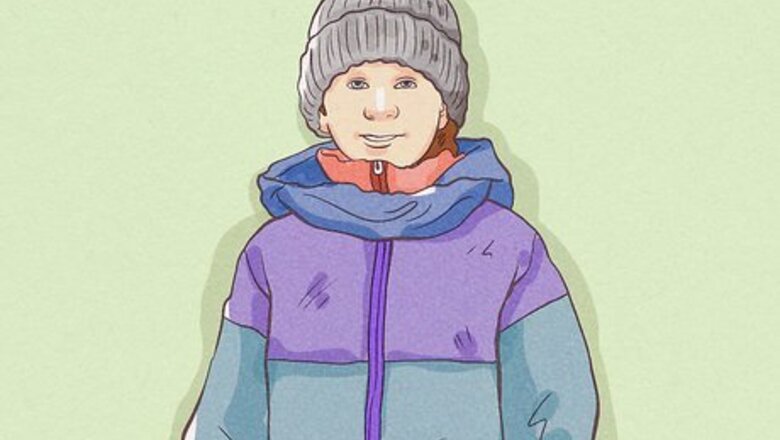
views
Understanding How to Dress for Snow
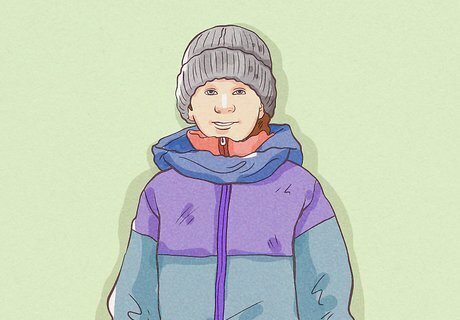
Dress in multiple layers. Dress children in at least three layers before they go out in the snow: a base layer, which wicks moisture away; a middle layer, which insulates warmth; and an outer layer, which offers warmth as well as moisture and wind protection. A good rule of thumb is to put one extra layer on your child than you will be comfortable in. You can adjust these layers based on climate and conditions by adding more than one middle layer, or doing without the middle layer or a removable coat liner. Encourage kids to come inside to put on an extra layer if they’re cold, or remove a middle layer if they are overheating.
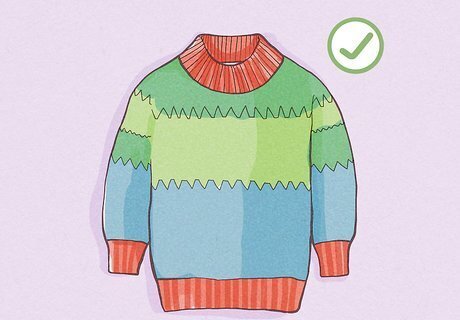
Stick to wool and synthetics. When buying base layers and socks in particular, favor synthetic fabrics and natural wool over garments made with cotton. Cotton is a hydrophilic fiber, meaning it absorbs and retains moisture easily, trapping cold moisture against the body and increasing health risks. Good materials to look out for when you’re shopping for warm layers and socks are: acrylic, polyester, wool, Merino wool, and polypropylene.

Find waterproof outerwear. Invest in a quality coat and snow pants that are rated for a certain temperature and ability to repel moisture and wind. Choose a rating based on the lowest predicted or average temperatures for the winter in your area. Know that there is a difference between “waterproof” and “water-resistant,” with the latter being less effective at keeping moisture out of the garment. Check the label and ratings on coats and pants before you buy them. Treat outerwear with spray-on durable water repellant (DWR) to increase effectiveness or re-treat an older garment to maintain its performance.
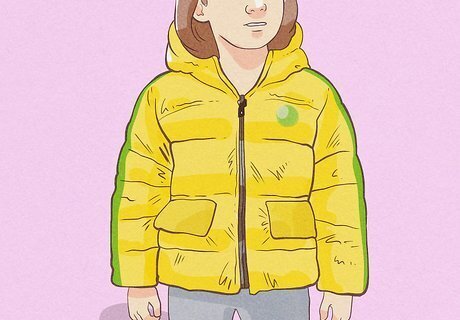
Choose outerwear in bright colors. Dress children with outerwear in bright colors so that they are visible in contrast to the snow and seen by other pedestrians and nearby drivers through any snowy conditions. Get coats and snow pants with neon elements or reflective strips for extra visibility. Or add your own reflective tape to a garment.
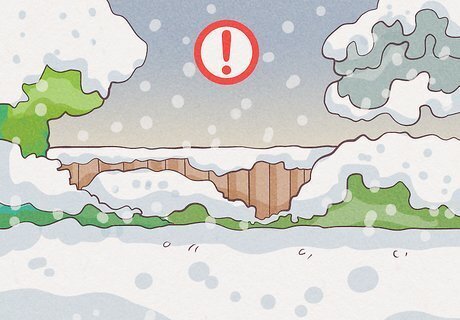
Check weather to see if it is safe to play outside. Look at weather reports before allowing your child to play outside in the snow. Avoid sending them out if there is a snow storm, high winds, or other winter weather approaching, or if it is nearing sundown. If the temperature or wind chill (the “real feel” that takes into account wind) is at or below 0 degrees Fahrenheit, frostbite can occur in 30 minutes or less. Make sure kids go out for only short intervals, or not at all if the temperature and wind chill are very low. Periodically call children inside to check them for signs of frostnip or frostbite, whether or not they complain of being cold. Check the head, face, ears, hands, and feet for loss of color or redness, or reports of numbness or tingling. Run affected areas under warm (not hot) water until sensation returns.
Choosing the Right Tops and Bottoms
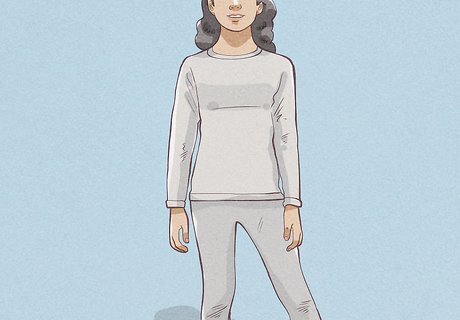
Get a top and bottom base layer. Dress children in a base layer for the legs and for the upper body. Base layer garments should fit snugly against the body, be breathable, and dry quickly, so as not to hold cold moisture against the skin. Buy base layers made from thin wool, polyester, and other synthetic materials. Avoid cotton, as it absorbs moisture easily but is slow to dry, causing remaining moisture around the body to get cold and remain wet. Long Johns or thermal underwear are good choices for a base layer, as long as they are made from a moisture-wicking material and not cotton.
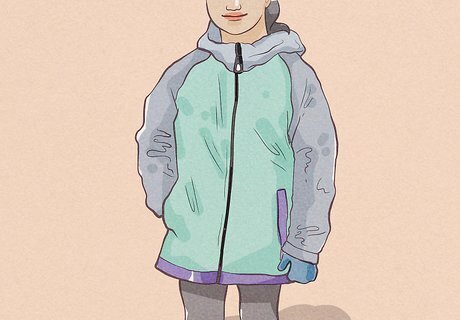
Add a shirt or light jacket and pants. Over the base layer, dress your child in a warm long sleeve shirt, sweater, or fleece jacket. Pull on light sweatpants or other thin, stretchy, and comfortable pants or leggings. These should fit over your child’s base layer and under coats and pants. Many people choose to forgo a middle layer for the legs, as legs are more easily kept warm by movement, and bulk accumulates here easily and begins to restrict movement. Use your discretion and listen to your child about their comfort. Never wear denim jeans or other pants made from very heavy material, as these absorb water easily and dry very slowly.

Top with a quality coat. Look for winter coat that is intended for snow, cold temperature, wind resistance, and water repellency. Check cold and waterproof ratings to ensure that a coat will meet the conditions of your local climate. Make sure all zippers, snaps, and other fastenings are closed when dressing the child. Look for coats that are long so they cover the body past the waist, and have high necks and hoods to keep the cold out from the neck and face. Ideally, a coat should also have plenty of ventilation methods to release sweat from the inner layers. Look for zippers under the arms that allow for ventilation when you need it, a front zipper that’s easy to zip and unzip, and sleeve ends that can be loosened. Ensure that zipper pulls are easy to handle or modify them so that children don’t have to remove gloves or mittens to zip and unzip.
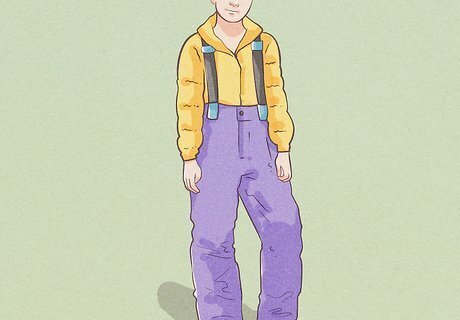
Get good snow pants. Look for pants that have similar qualities as coats in regards to warmth, good construction, and wind and water resistance. Snow pants are generally thick, insulated pants meant to be worn over other layers. Consider snow pants in a bib or overalls style that goes over the shoulder to help pants stay on and avoid snow and cold getting in from between the coat and pants.
Keeping Extremities and Faces Warm
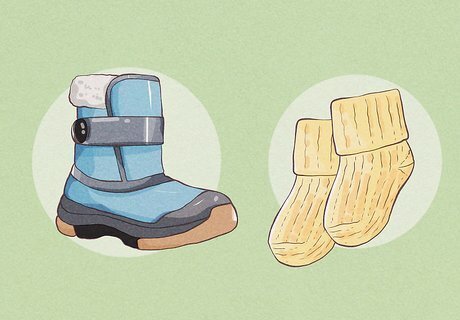
Get quality socks and boots. Choose quality socks that are 100% wool or a blend of wool and synthetic material. Invest in winter boots that are well made and well insulated, with good tread and a good rating for cold as well as waterproof ability. Avoid wearing more than one pair of socks, as this will only create bunching and discomfort without much extra warmth. Ensure that boots are not too tight, especially if wearing them with thick socks. Too-tight socks and boots can constrict blood flow, and thus heat, to the feet and toes.
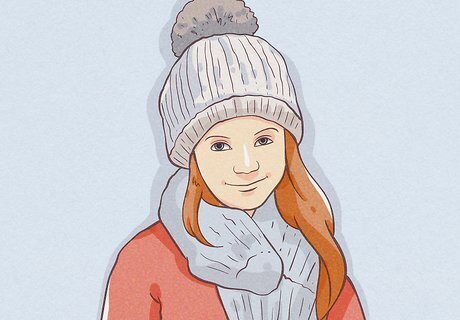
Cover the head and neck with a hat and scarf. Wrap the neck and even the lower half of the face in a warm knit scarf. Tuck the ends down into the coat and zip it up to or over the scarf. Top the head with a warm beanie or hat with earflaps, then pull up the hood on the coat for extra warmth and protection. Children and babies lose a lot of heat through their head, so it's very important that you dress them in a warm hat. Ensure that the hat you dress your child in fully covers the ears and fits snugly on the head. An ear warmer headband or earmuffs may be needed additionally or instead of a hat if ears remain cold or come uncovered. Ski masks or balaclavas cover more of the face and can provide extra warmth. Just make sure that your child can breathe and see easily in something covering the face. Never dress infants or toddlers in a wraparound scarf, and supervise all children to avoid the risk of strangulation. Try a tube scarf or neck gaiter to help reduce this risk.

Choose warm gloves or mittens. Make sure to dress kids in mittens or gloves that are thick, well-insulated, and waterproof. Mittens are ideal, as they hold more warmth inside. You may want to choose mittens for younger children, and gloves for when children are old enough to have more dexterity in their fingers. Try mittens or gloves that extend up to the forearm, or even shirts that have gloves attached, to avoid getting snow and cold into the gap between coat and gloves. Choose waterproof gloves so they won't get wet when your kids are outside making snowballs! You can also buy glove liners, which provide an extra layer of warmth and moisture wicking under your regular pair of gloves.


















Comments
0 comment